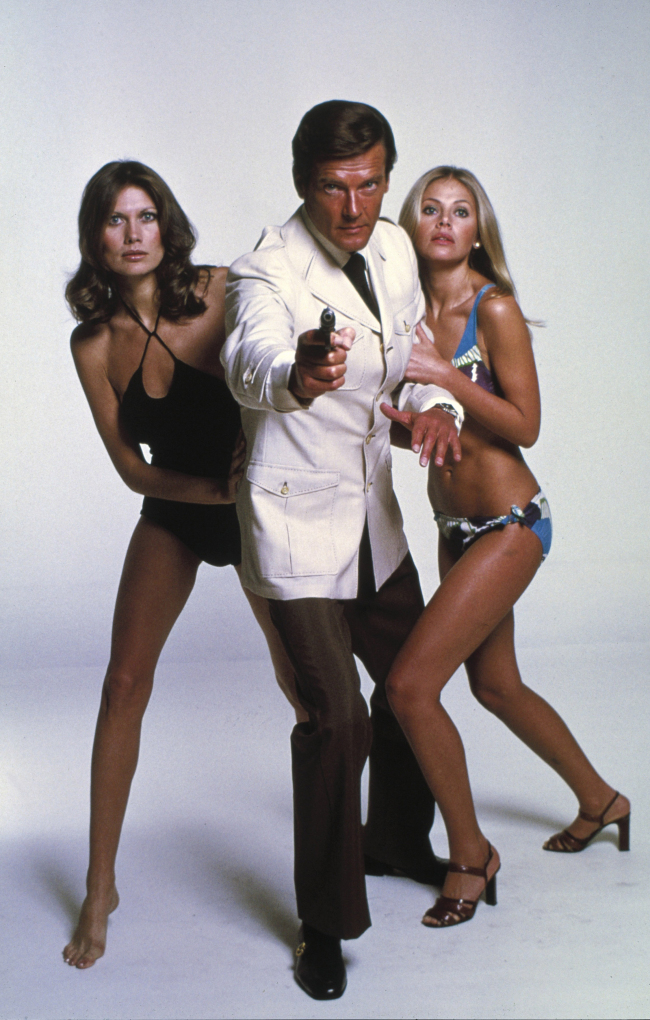
LONDON (AP) ― It was a meeting of the two most famous British people on the planet: Queen Elizabeth II turned to her tuxedo-wearing guest and said, “Good evening, Mr. Bond.’’
The pairing of these icons, the English monarch and the king of spies ― in a film for the opening ceremony of the London Olympics ― was a thrilling moment. It scarcely mattered that one of them was fictional. Agent 007 is real to millions of moviegoers, and once again they will flock to see Bond battle for queen and country when his 23rd official screen adventure, “Skyfall,’’ opens this fall.
He’s come a long way in the 50 years since the release ― on Oct. 5, 1962 ― of a modestly budgeted spy movie called “Dr. No.’’ It introduced a dapper but deadly secret agent who wore Savile Row suits, drove an Aston Martin, liked his martinis shaken, not stirred, and announced himself as “Bond, James Bond.’’
What’s the secret of his survival? Familiarity, says Roger Moore, who played Bond in seven films, more than any other actor.
“It’s sort of like a bedtime story: As long as you don’t go too far away from the original, the child is happy,’’ Moore said. “The audience gets what it’s expecting: beautiful girls, actions, gadgets ― there’s a formula.’’
That fiendishly successful formula had modest beginnings. Two upstart producers, Canadian Harry Saltzman and American Albert “Cubby’’ Broccoli, acquired the rights to a series of novels by Ian Fleming, a former World War II intelligence officer who had created 007 as sort of a fantasy alter-ego.
Saltzman and Broccoli had a budget of just $1 million, but through a blend of luck and design assembled an amazing team of on- and off-screen talent.
Sean Connery, a relatively unknown Scottish actor and former bodybuilder, was cast as Bond against the wishes of studio United Artists, which wanted an established star such as Cary Grant for the role.
“Everything or Nothing,’’ a new documentary about the Bond films, says the final seal of approval came from Broccoli’s wife. “Is he sexy?’’ Broccoli asked her.
Connery got the part.
Behind the scenes were artists like John Barry, composer of Bond’s pulse-quickening theme music; Maurice Binder, who created the famous gun-barrel title sequence; and designer Ken Adam, a German-born former RAF fighter pilot whose futuristic sets gave the films their look of modernist cool.
In the documentary, which airs Friday on EPIX, Adam recalls feeling “crazy with courage’’ in those early days. Others remember the same devil-may-care atmosphere.
“It was barnstorming days,’’ said David M. Kay, whose company provided aircraft for filming and stunts on the early Bond films, including the helicopter-volcano sequence in “You Only Live Twice.’’
“We didn’t have health and safety as we have now. Broccoli was an absolute cavalier and demanded things that were well-nigh impossible,’’ Kay recalled.
It was also enormous fun, he said ― “men playing with boys’ toys.’’
That sense of playfulness spilled over to the screen. “Dr. No’’ arrived in movie theaters with perfect timing, as Britain swapped postwar austerity for growing prosperity.
Bond’s world of cars, casinos and caviar was sexy, luxurious and colorful. Instead of a gray, shadowy figure, here was spy as glamorous jet-setter. The films turned Cold War anxiety into a thrill-ride from which the good guy always emerged triumphant.
“There had been nothing like it before,’’ said Graham Rye, editor of 007 magazine, who remembers being blown away by the film as an 11-year-old. “A lot of British films at the time were austere, black-and-white, kitchen-sink dramas. When ‘Dr. No’ exploded onto the screen, it had a pretty visceral effect on everybody.’’
Since then, Bond has survived showdowns with enemies from uber-villain Ernst Blofeld to steel-toothed assassin Jaws. Even more impressively, he has weathered the social revolution of the 1960s, financial woes and lawsuits, multiple changes of the lead actor, the end of the Cold War and the dawn of the War on Terror.
The pairing of these icons, the English monarch and the king of spies ― in a film for the opening ceremony of the London Olympics ― was a thrilling moment. It scarcely mattered that one of them was fictional. Agent 007 is real to millions of moviegoers, and once again they will flock to see Bond battle for queen and country when his 23rd official screen adventure, “Skyfall,’’ opens this fall.
He’s come a long way in the 50 years since the release ― on Oct. 5, 1962 ― of a modestly budgeted spy movie called “Dr. No.’’ It introduced a dapper but deadly secret agent who wore Savile Row suits, drove an Aston Martin, liked his martinis shaken, not stirred, and announced himself as “Bond, James Bond.’’
What’s the secret of his survival? Familiarity, says Roger Moore, who played Bond in seven films, more than any other actor.
“It’s sort of like a bedtime story: As long as you don’t go too far away from the original, the child is happy,’’ Moore said. “The audience gets what it’s expecting: beautiful girls, actions, gadgets ― there’s a formula.’’
That fiendishly successful formula had modest beginnings. Two upstart producers, Canadian Harry Saltzman and American Albert “Cubby’’ Broccoli, acquired the rights to a series of novels by Ian Fleming, a former World War II intelligence officer who had created 007 as sort of a fantasy alter-ego.
Saltzman and Broccoli had a budget of just $1 million, but through a blend of luck and design assembled an amazing team of on- and off-screen talent.
Sean Connery, a relatively unknown Scottish actor and former bodybuilder, was cast as Bond against the wishes of studio United Artists, which wanted an established star such as Cary Grant for the role.
“Everything or Nothing,’’ a new documentary about the Bond films, says the final seal of approval came from Broccoli’s wife. “Is he sexy?’’ Broccoli asked her.
Connery got the part.
Behind the scenes were artists like John Barry, composer of Bond’s pulse-quickening theme music; Maurice Binder, who created the famous gun-barrel title sequence; and designer Ken Adam, a German-born former RAF fighter pilot whose futuristic sets gave the films their look of modernist cool.
In the documentary, which airs Friday on EPIX, Adam recalls feeling “crazy with courage’’ in those early days. Others remember the same devil-may-care atmosphere.
“It was barnstorming days,’’ said David M. Kay, whose company provided aircraft for filming and stunts on the early Bond films, including the helicopter-volcano sequence in “You Only Live Twice.’’
“We didn’t have health and safety as we have now. Broccoli was an absolute cavalier and demanded things that were well-nigh impossible,’’ Kay recalled.
It was also enormous fun, he said ― “men playing with boys’ toys.’’
That sense of playfulness spilled over to the screen. “Dr. No’’ arrived in movie theaters with perfect timing, as Britain swapped postwar austerity for growing prosperity.
Bond’s world of cars, casinos and caviar was sexy, luxurious and colorful. Instead of a gray, shadowy figure, here was spy as glamorous jet-setter. The films turned Cold War anxiety into a thrill-ride from which the good guy always emerged triumphant.
“There had been nothing like it before,’’ said Graham Rye, editor of 007 magazine, who remembers being blown away by the film as an 11-year-old. “A lot of British films at the time were austere, black-and-white, kitchen-sink dramas. When ‘Dr. No’ exploded onto the screen, it had a pretty visceral effect on everybody.’’
Since then, Bond has survived showdowns with enemies from uber-villain Ernst Blofeld to steel-toothed assassin Jaws. Even more impressively, he has weathered the social revolution of the 1960s, financial woes and lawsuits, multiple changes of the lead actor, the end of the Cold War and the dawn of the War on Terror.
-
Articles by Korea Herald


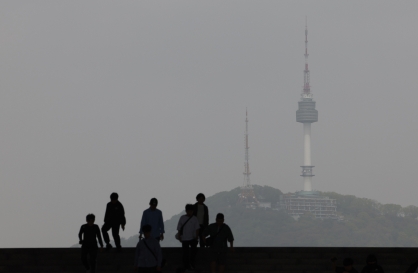
![[AtoZ Korean Mind] Does your job define who you are? Should it?](http://res.heraldm.com/phpwas/restmb_idxmake.php?idx=644&simg=/content/image/2024/05/06/20240506050099_0.jpg&u=)

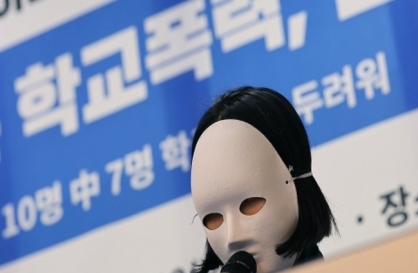
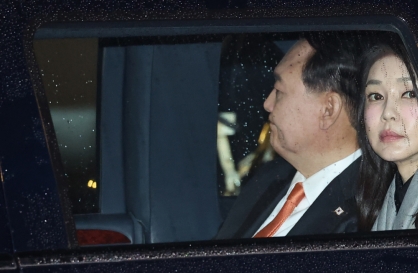



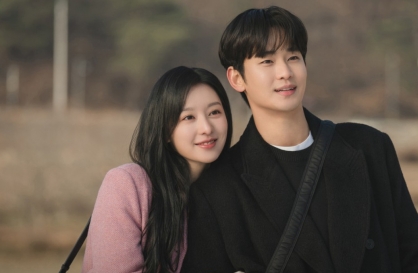
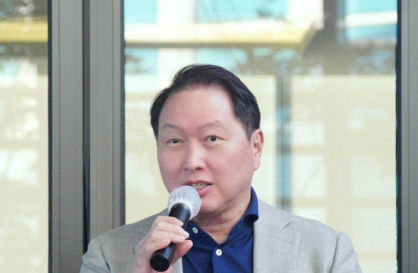


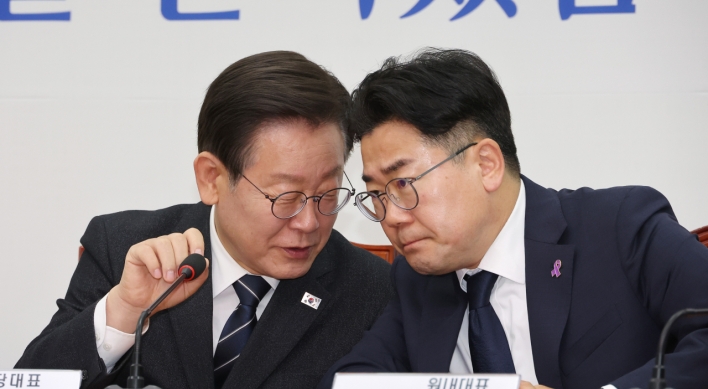
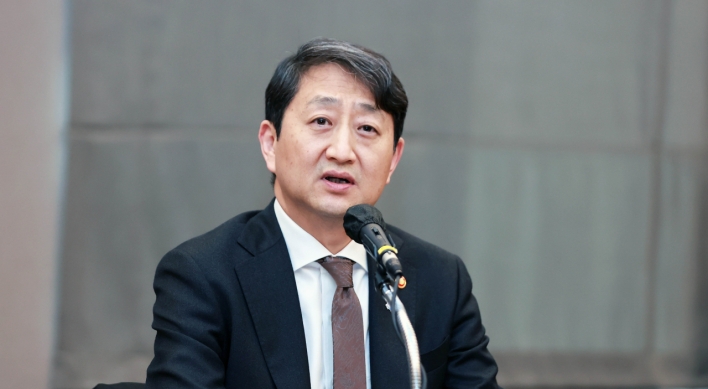

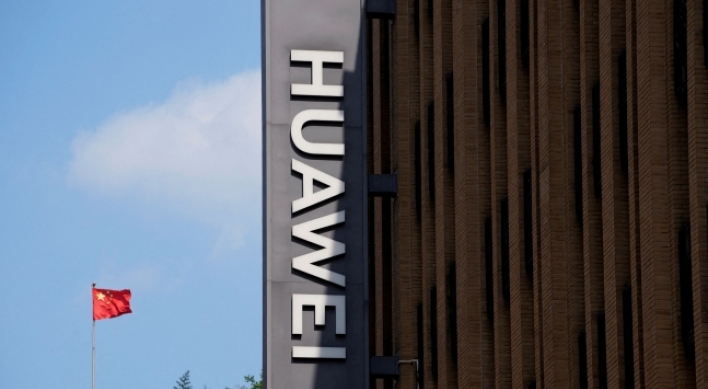

![[K-pop's dilemma] Is Hybe-Ador conflict a case of growing pains?](http://res.heraldm.com/phpwas/restmb_idxmake.php?idx=642&simg=/content/image/2024/05/07/20240507050746_0.jpg&u=)